Correlative conjunctions are pairs of conjunctions that connect equal parts of a sentence, ensuring balance and clarity. Examples include “either…or,” “neither…nor,” and “not only…but also.” These conjunctions improve sentence structure by linking ideas effectively.
In this blog, we will explore correlative conjunctions, their meaning, usage, and examples to help you understand their role in English grammar. Mastering these conjunctions will enhance the flow of your sentences and improve your communication skills. This understanding will also support your learning journey, similar to a spoken English course.
इस blog में, हम correlative conjunctions के बारे में जानेंगे, उनके अर्थ, use और examples को समझेंगे। यह आपके English grammar को बेहतर बनाएगा।
What are Correlative Conjunctions?
Correlative conjunctions are pairs of words used to link two related ideas, phrases, or clauses. These conjunctions always appear in pairs, emphasizing the connection between the elements.
Correlative conjunctions वह conjunctions होते हैं जो जोड़े में आते हैं और दो संबंधित ideas, phrases, या clauses को जोड़ते हैं।
Examples:
Either you study hard, or you might fail the test.
Neither the teacher nor the students were ready for the announcement.
Either आप मेहनत से पढ़ाई करें, or आप असफल हो सकते हैं।
Neither शिक्षक nor छात्र घोषणा के लिए तैयार थे।
Definition of Correlative Conjunctions
Correlative conjunctions are defined by their dual structure, which requires both parts of the pair to be used together in a sentence. They connect elements of equal grammatical importance, such as two nouns, two phrases, or two clauses.
Correlative conjunctions को उनकी dual structure से पहचाना जाता है, जिसमें sentence में pair के दोनों parts का उपयोग जरूरी होता है। ये समान grammatical importance वाले elements को जोड़ते हैं, जैसे दो nouns, phrases, या clauses।
Examples:
Not only is she talented, but also she is hardworking.
Both the film and the music were fantastic.
Not only वह प्रतिभाशाली है, but also वह मेहनती है।
Both फिल्म and संगीत शानदार थे।
Tricky Correlative Conjunction Examples
Correlative conjunctions are usually straightforward, but errors can occur with their placement or consistency. Here are examples of common mistakes with correlative conjunctions:
Correlative conjunctions आमतौर पर सरल होते हैं, लेकिन उनके placement या consistency में गलतियां हो सकती हैं। यहां correlative conjunctions के साथ होने वाली common mistakes के कुछ उदाहरण दिए गए हैं।
Either…Or
Incorrect: Either you can have tea nor coffee.
Correct: Either you can have tea or coffee.
Hindi: “या तो आप चाय ले सकते हैं या coffee”
Note: “Either” का pair हमेशा “or” के साथ होता है।
Neither…Nor
Incorrect: Neither she is interested or available.
Correct: Neither she is interested nor available.
Hindi: “न तो वह इच्छुक है और न ही उपलब्ध।”
Note: “Neither” का pair हमेशा “nor” के साथ होना चाहिए।
Not only…But also
Incorrect: She is not only talented but hardworking.
Correct: She is not only talented but also hardworking.
Hindi: “वह न केवल प्रतिभाशाली है बल्कि मेहनती भी है।”
Note: “Not only” के बाद “but also” का उपयोग करना जरूरी है।
Both…And
Incorrect: Both the movie was good and the songs.
Correct: Both the movie and the songs were good.
Hindi: “फिल्म और गाने दोनों अच्छे थे।”
Note: “Both” और “and” को balance बनाए रखने के लिए सही तरीके से उपयोग करना जरूरी है।
Correlative Conjunctions in Sentences
Here are some common examples of correlative conjunctions used in sentences, along with their Hindi translations:
- English: Either you complete the project, or you leave the team.
Hindi: “या तो आप project पूरा करें, या team छोड़ दें।” - English: Neither the weather nor the traffic is good today.
Hindi: “न तो मौसम अच्छा है और न ही traffic।” - English: She not only sings beautifully but also writes her own songs.
Hindi: “वह न केवल खूबसूरती से गाती है बल्कि अपने गाने भी लिखती है।” - English: Both the teacher and the students were excited about the event.
Hindi: “Teacher और छात्र दोनों event को लेकर उत्साहित थे।” - English: Whether you like it or not, this is the reality.
Hindi: “चाहे आपको यह पसंद हो या न हो, यह सच्चाई है।”
When Do We Use Correlative Conjunctions?
We use correlative conjunctions to link two related ideas, phrases, or clauses while maintaining balance in a sentence. These conjunctions ensure that the connected elements are grammatically equal, making the sentence more structured and clear.
For example, in the sentences “Either you can join us, or you can stay home” and “Not only is she talented, but also hard working,” the conjunction pairs “either…or” and “not only…but also” maintain balance and emphasize the relationship between ideas.
हम correlative conjunctions का use दो संबंधित ideas, phrases, या clauses को जोड़ने और sentence में balance बनाए रखने के लिए करते हैं। ये conjunctions ensure करते हैं कि जुड़े हुए elements grammatically समान हों, जिससे sentence structured और clear बनता है।
Example:
“या तो आप हमारे साथ जुड़ सकते हैं, या घर पर रह सकते हैं” और “वह न केवल प्रतिभाशाली है, बल्कि मेहनती भी है” में “either…or” और “not only…but also” pair ideas को balance और connection प्रदान करते हैं।
Correlative Conjunction Rules
1. Maintaining Balance Between Elements
Correlative conjunctions must connect elements that are grammatically parallel.
Example:
English: “She is both intelligent and creative.”
Hindi: “वह both बुद्धिमान है और रचनात्मक भी।”
2. Pairing Conjunctions Correctly
Correlative conjunctions always appear in pairs, and each pair must be used as a set.
Example:
English: “Neither the students nor the teacher were ready.”
Hindi: “न तो छात्र और न ही शिक्षक तैयार थे।”
3. Avoiding Redundancy
Using both parts of a pair incorrectly or adding unnecessary words can cause redundancy.
Example:
Incorrect: “Not only she sings, and also she dances.”
Correct: “Not only does she sing, but also she dances.”
Hindi: “वह न केवल गाती है, बल्कि नाचती भी है।”
4. Subject-Verb Agreement
When using correlative conjunctions, ensure the verb agrees with the closest subject in compound subjects.
Example:
English: “Neither the teacher nor the students were prepared.”
Hindi: “न तो शिक्षक और न ही छात्र तैयार थे।”
Note: The verb agrees with “students,” which is closer.
5. Use with Comparatives
Correlative conjunctions like “the more…the more” or “the sooner…the better” are used to show comparisons or cause-effect relationships.
Example:
English: “The more you practice, the better you will get.”
Hindi: “जितना अधिक आप अभ्यास करेंगे, उतना बेहतर आप बनेंगे।”
6. Avoid Double Negatives
When using negative correlative pairs like “neither…nor,” avoid adding another negative in the sentence.
Example:
Incorrect:
English: “Neither he didn’t come nor did she.”
Hindi: “न तो वह नहीं आया और न ही वह।”
Correct:
English: “Neither he came nor she.”
Hindi: “न तो वह आया और न ही वह।”
7. Maintain Logical Connections
Ensure that the ideas connected by correlative conjunctions are logically related.
Example:
Incorrect:
English: “Either we can go to the park, or the pizza tastes good.”
Hindi: “या तो हम park जा सकते हैं, या पिज़्ज़ा अच्छा लगता है।”
Correct:
English: “Either we can go to the park, or we can stay home.”
Hindi: “या तो हम park जा सकते हैं, या घर पर रह सकते हैं।”
Typical Errors with Correlative Conjunctions
Using correlative conjunctions correctly is essential for clear and balanced communication.
Correlative conjunctions का सही उपयोग communication को स्पष्ट और संतुलित बनाता है।
Common Errors:
1. Incorrect Pairing of Conjunctions
Using mismatched pairs instead of the correct correlative conjunction pair is a frequent mistake.
Example:
Incorrect: “Both she is talented or hardworking.”
Correction: “Both she is talented and hardworking.”
Hindi:
गलत: “वह both प्रतिभाशाली है या मेहनती।”
सही: “वह both प्रतिभाशाली है और मेहनती।”
2. Imbalanced Sentence Structure
Correlative conjunctions must connect elements of equal grammatical importance.
Example:
Incorrect: “She is either very talented or has a kind heart.”
Correction: “She is either very talented or very kind-hearted.”
Hindi:
गलत: “वह या तो बहुत प्रतिभाशाली है या एक दयालु दिल है।”
सही: “वह या तो बहुत प्रतिभाशाली है या बहुत दयालु है।”
3. Redundant Words
Adding unnecessary words along with correlative conjunctions can make the sentence awkward or incorrect.
Example:
Incorrect: “Not only she sings, but she also dances too.”
Correction: “Not only does she sing, but she also dances.”
Hindi:
गलत: “वह न केवल गाती है, बल्कि वह नाचती भी है।”
सही: “वह न केवल गाती है बल्कि नाचती भी है।”
4. Inconsistent Verb Agreement
In compound subjects, the verb must agree with the closest subject.
Example:
Incorrect: “Neither the students nor the teacher were prepared.”
Correction: “Neither the students nor the teacher was prepared.”
Hindi:
गलत: “न तो छात्र और न ही शिक्षक तैयार थे।”
सही: “न तो छात्र और न ही शिक्षक तैयार था।”
5. Misplaced Conjunctions
Incorrect placement of correlative conjunctions can make the sentence unclear.
Example:
Incorrect: “She not only is talented but also hardworking.”
Correction: “Not only is she talented, but she is also hardworking.”
Hindi:
गलत: “वह न केवल प्रतिभाशाली है बल्कि मेहनती भी है।”
सही: “न केवल वह प्रतिभाशाली है, बल्कि वह मेहनती भी है।”
6. Using Both Parts Incorrectly
Both parts of the conjunction must be used as a pair. Leaving one out is a common mistake.
Example:
Incorrect: “He wants either tea.”
Correction: “He wants either tea or coffee.”
Hindi:
गलत: “वह या तो चाय चाहता है।”
सही: “वह या तो चाय या कॉफी चाहता है।”
Difference Between Correlative Conjunctions and Other Conjunctions
The fundamental difference between correlative conjunctions and other conjunctions lies in their structure and usage. Correlative conjunctions always work in pairs and connect elements of equal importance, whereas other conjunctions (like coordinating or subordinating conjunctions) may not follow this pattern.
Correlative conjunctions हमेशा जोड़ों में काम करती हैं और समान महत्व वाले elements को जोड़ती हैं, जबकि अन्य conjunctions (जैसे coordinating या subordinating conjunctions) ऐसा pattern नहीं अपनाते।
Comparison
Correlative Conjunction
Example: “Either he will join the meeting, or he will send a message.”
Hindi: “या तो वह meeting में शामिल होगा या वह एक संदेश भेजेगा।”
Coordinating Conjunction
Example: “He joined the meeting, and he shared the updates.”
Hindi: “वह meeting में शामिल हुआ और उसने updates साझा कीं।”
Correlative Conjunction
Example: “Not only is she smart, but she is also creative.”
Hindi: “वह न केवल समझदार है, बल्कि रचनात्मक भी है।”
Subordinating Conjunction
Example: “She is successful because she works hard.”
Hindi: “वह सफल है क्योंकि वह मेहनत करती है।”
Correlative Conjunction
Example: “Neither the students nor the teacher was ready.”
Hindi: “न तो छात्र और न ही शिक्षक तैयार थे।”
Coordinating Conjunction
Example: “The teacher was ready, but the students were not.”
Hindi: “शिक्षक तैयार था, लेकिन छात्र नहीं थे।”
Correlative Conjunction
Example: “Both the presentation and the report were excellent.”
Hindi: “प्रस्तुति और रिपोर्ट दोनों उत्कृष्ट थीं।”
Subordinating Conjunction
Example: “The report was excellent although the presentation was average.”
Hindi: “रिपोर्ट उत्कृष्ट थी, हालांकि प्रस्तुति औसत थी।”
Practice Questions Related to Correlative Conjunctions
Fill in the blanks with the correct correlative conjunction (choose the correct pair in brackets):
- You can __ have a cup of tea __ a glass of juice. (either…or/neither…nor)
- She is __ intelligent __ hardworking. (not only…but also/both…and)
- __ the students __ the teacher were present in the class. (either…or/neither…nor)
- The painting is __ beautiful __ unique. (not only…but also/both…and)
- We will go for a picnic __ it is sunny __ warm. (whether…or/as…as)
- __ the driver __ the passengers were injured in the accident. (neither…nor/not only…but also)
- The book was __ interesting __ informative. (both…and/either…or)
- You can choose __ the red dress __ the blue one. (either…or/neither…nor)
- __ does she cook well, __ she bakes amazing cakes. (not only…but also/both…and)
- __ the cat __ the dog could find shelter during the storm. (neither…nor/either…or)
- We will visit the museum __ today __ tomorrow. (either…or/both…and)
- The dish is __ healthy __ delicious. (both…and/not only…but also)
- He can __ join the gym __ start exercising at home. (either…or/whether…or)
- __ you study hard __ you will fail the test. (either…or/neither…nor)
- She __ sings well __ dances gracefully. (not only…but also/both…and)
Answers:
- either…or
- not only…but also
- neither…nor
- both…and
- whether…or
- neither…nor
- both…and
- either…or
- not only…but also
- neither…nor
- either…or
- both…and
- either…or
- either…or
- not only…but also
Common Questions About Correlative Conjunctions
Q1: What are correlative conjunctions?
Answer: Correlative conjunctions are pairs of words used to link two related ideas, phrases, or clauses. They work together to create balance and emphasize the connection between sentence elements. Examples include “either…or,” “neither…nor,” and “not only…but also.”
Example:
- “Either you study hard, or you might fail.”
- “Neither the teacher nor the students were prepared.”
Q2: How do correlative conjunctions maintain balance in a sentence?
Answer: Correlative conjunctions connect elements of equal grammatical value, such as two nouns, two verbs, or two clauses. Both parts of the pair must be used correctly to maintain grammatical balance.
Example:
- Correct: “Both the film and the music were excellent.”
- Incorrect: “Both the film was excellent and the music.”
Q3: Can correlative conjunctions connect more than two elements?
Answer: No, correlative conjunctions specifically connect two parallel ideas, phrases, or clauses. For connecting more than two items, other conjunctions like “and” or “or” are used.
Q4: What are common mistakes when using correlative conjunctions?
Answer: Common mistakes include incorrect placement, lack of balance, or inconsistency between the elements connected by the conjunctions.
Example:
- Incorrect: “Either he likes football or cricket.”
- Correct: “Either he likes football or he likes cricket.”
Q5: How are correlative conjunctions used in questions?
Answer: Correlative conjunctions can be used in questions to present two related options or ideas.
Example:
- “Would you rather have either tea or coffee?”
- “Did she not only write the report but also present it?”
Conclusion
We hope this blog on Correlative Conjunctions has helped you understand their importance and usage in English. Correlative conjunctions connect related ideas, ensuring your sentences are balanced and grammatically correct. They help convey relationships like choice, contrast, or addition, making your communication more effective and engaging. Mastering correlative conjunctions is crucial for improving both written and spoken English. It enables you to construct clear and precise sentences, enhancing your overall communication skills. If you want to further improve your English, consider joining a Spoken English Course for structured learning and practice. Start your journey to confident communication today!





